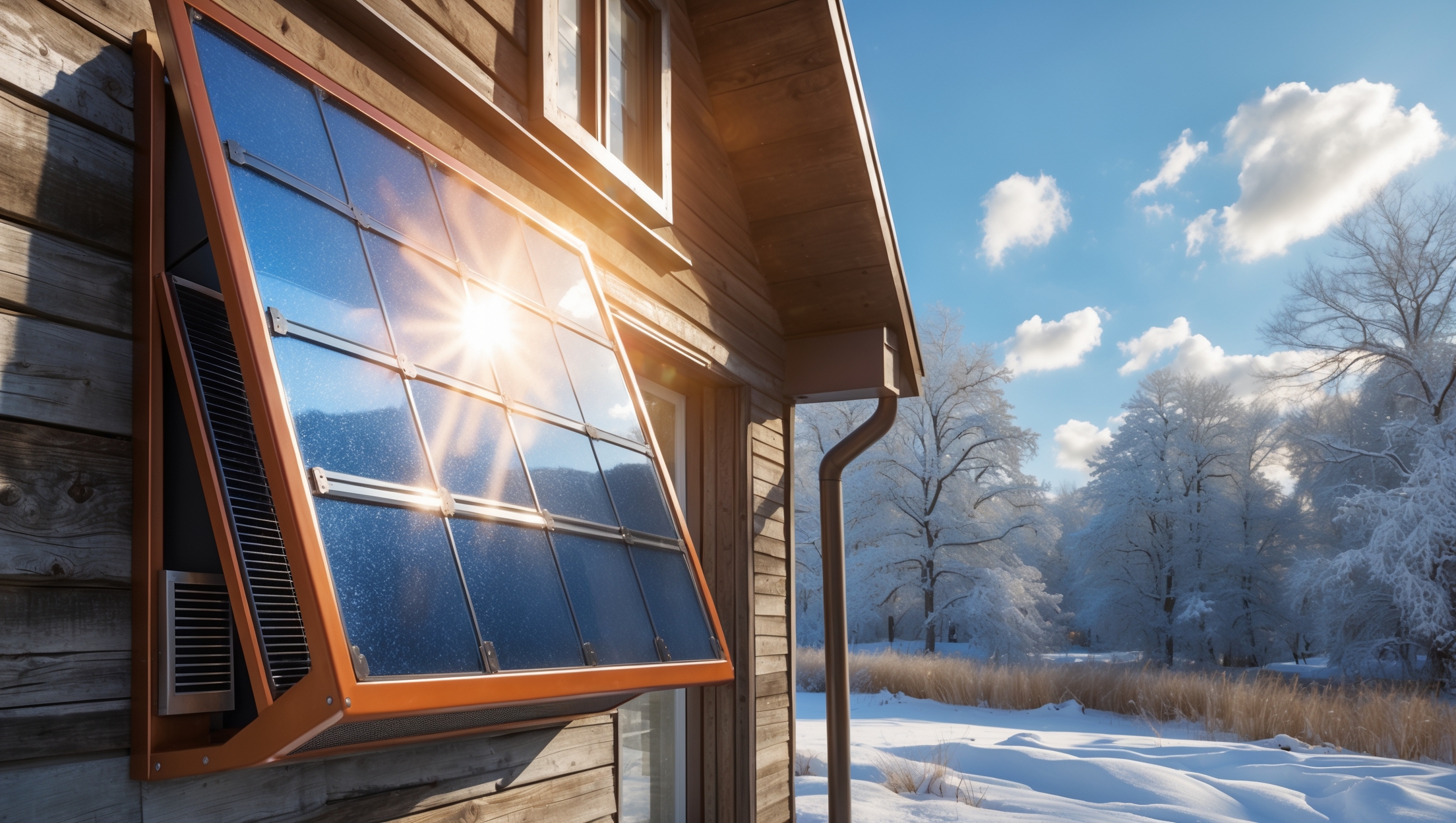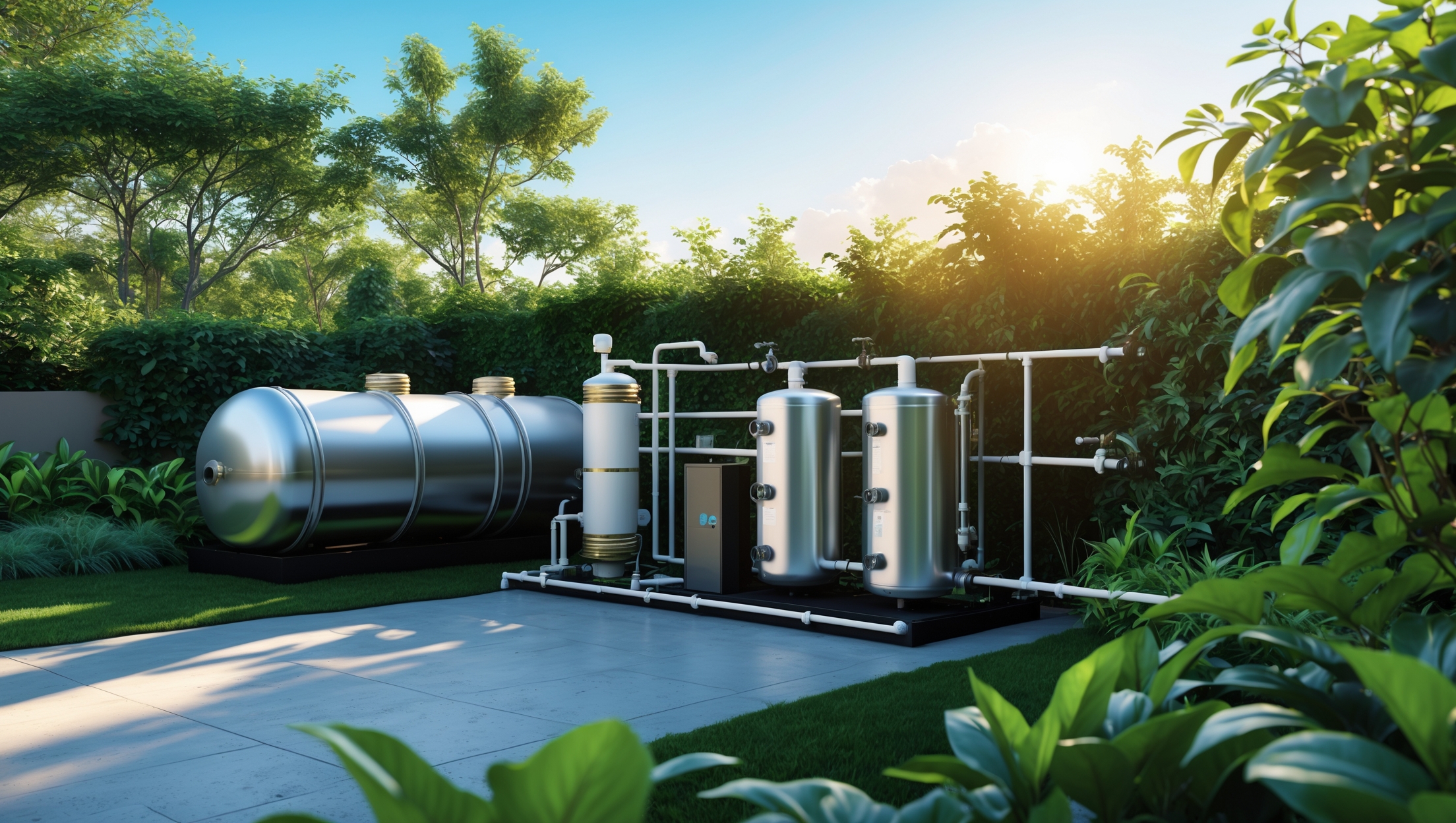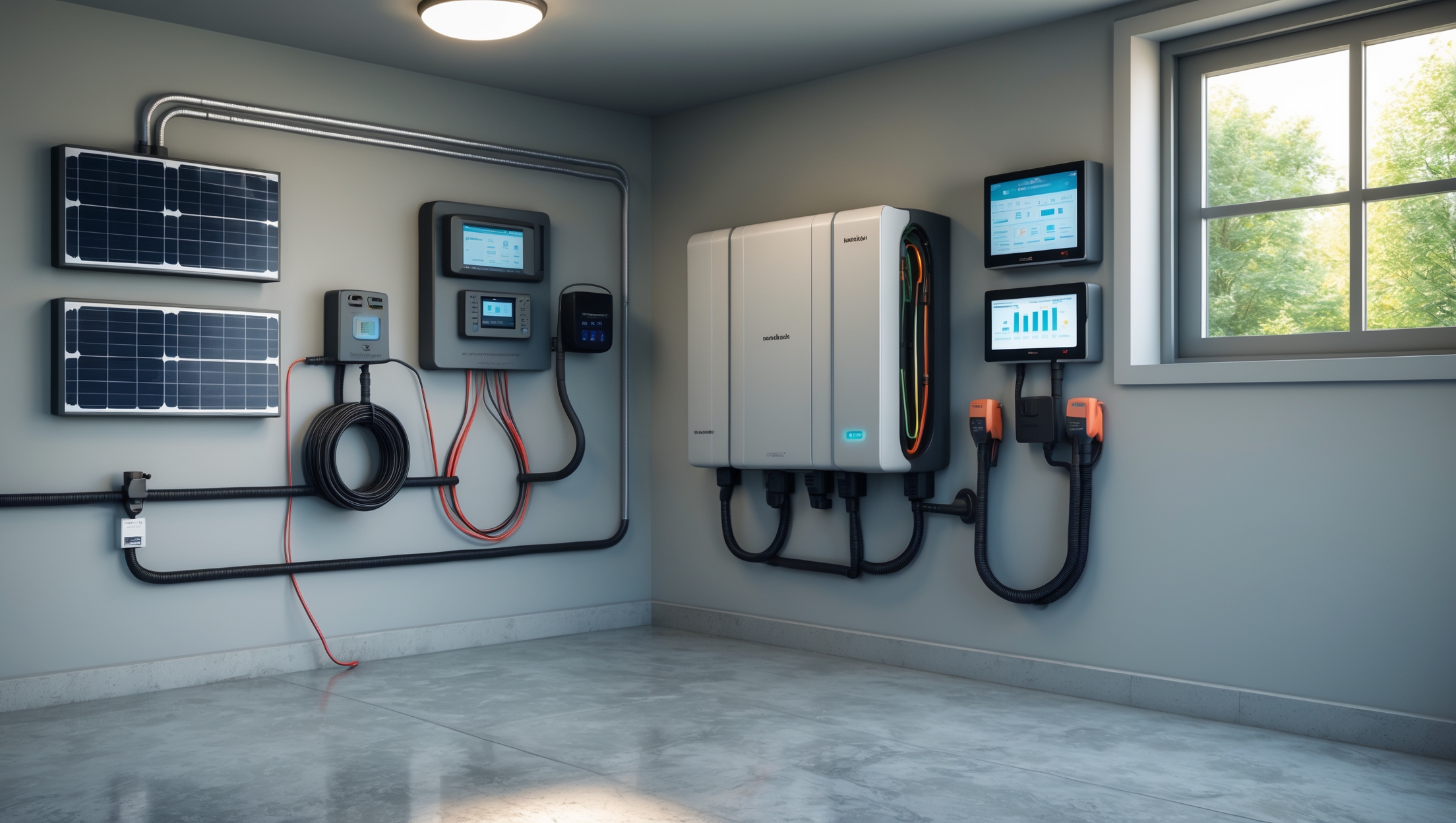Introduction: Why Build a Home Solar Air Heater?
As winter approaches, energy bills climb and the urge to keep your living space warm intensifies. Traditional electric or gas heating can be expensive and environmentally taxing. Fortunately, there’s a sustainable, cost-effective solution you can build yourself: a home solar air heater. This simple device harnesses the power of the sun to boost indoor temperatures, reduce your reliance on fossil fuels, and lower utility costs—all while shrinking your carbon footprint. Whether you’re a sustainability enthusiast or a homeowner seeking to cut expenses, understanding the right tools and equipment is essential for a successful solar air heater project.
This comprehensive guide walks you through every tool, material, and piece of equipment you’ll need to construct your own solar air heater. We’ll cover the reasons these tools matter, how to select them, and practical tips for safe, efficient assembly. By the end, you’ll be ready to tackle your project with confidence, knowing you’re investing in both environmental sustainability and winter comfort.
Understanding Solar Air Heaters: A Quick Overview
How Solar Air Heaters Work
Solar air heaters consist of a collector—usually a box with a transparent front and an absorptive interior surface—mounted on a sun-drenched wall. Cool air from your home is drawn into the collector, heated by the sun, and then recirculated inside through vents. The result? Free, renewable heat supplementing your primary system.
Benefits of DIY Solar Air Heaters
- Reduces heating bills during cold months
- Decreases reliance on fossil fuels
- Low maintenance after installation
- Customizable to fit your specific space and needs
- Promotes hands-on learning in sustainable technology
Essential Tools for Building a Solar Air Heater
Measuring and Marking Tools
- Measuring tape (at least 25 ft): For precise dimensions of your frame and collector.
- Square and level: To ensure accurate cuts and a properly aligned frame.
- Pencil/marker: For marking cut lines and drill points on materials.
Cutting Tools
- Circular saw or table saw: For cutting wood or metal to construct the collector frame.
- Handsaw: Useful for small adjustments or trimming thin materials.
- Metal snips: For cutting sheet metal or aluminum flashing for the absorber plate.
- Utility knife: To trim insulation, weatherstripping, and plastic sheeting.
Drilling and Fastening Tools
- Power drill/driver (corded or cordless): For assembling the frame and attaching the collector to your wall.
- Drill bit set (wood and metal bits): To make pilot holes for screws or bolts.
- Screwdrivers (Phillips and flathead): For manual adjustments and installing vent covers.
- Hammer: For securing nails or tapping frame components into place.
Finishing and Sealing Tools
- Caulking gun: For applying weatherproof sealant to joints and seams.
- Paintbrush/roller: To paint the absorber plate (usually with flat black, high-temperature paint).
- Putty knife: Useful for spreading adhesive or sealant smoothly.
Safety Gear
- Safety glasses: Protects eyes from flying debris during cutting or drilling.
- Work gloves: Prevents cuts and splinters when handling sharp materials.
- Dust mask/respirator: Essential when cutting or painting to avoid inhaling particles or fumes.
- Hearing protection: Recommended if using power saws for extended periods.
Key Materials and Equipment Checklist
Frame Components
- Lumber (2x4s or similar): For building the collector’s box frame. Choose rot-resistant wood for exterior durability.
- Plywood or OSB board: Used for the back panel of the collector.
- Exterior-grade screws/bolts: To assemble the frame securely.
Glazing (Transparent Front)
- Polycarbonate panels: Durable, UV-resistant, and insulates well. Preferred over glass for DIY projects.
- Tempered glass: Offers excellent clarity and longevity but is heavier and more fragile.
Absorber Plate
- Sheet metal (aluminum or steel): Acts as the heat-absorbing surface inside the collector.
- Flat black, high-temperature paint: Maximizes heat absorption and withstands thermal cycling.
Insulation
- Rigid foam board or mineral wool: Lines the collector’s back and sides to minimize heat loss.
- Foil tape: Seals insulation joints and reflects radiant heat inward.
Air Circulation Components
- High-temperature ducting: Connects the collector’s output to your indoor vent.
- Vents/registers: Allows heated air to flow into your living space.
- Inline fan (optional): Boosts airflow on cloudy days or when passive convection isn’t enough.
Weatherproofing and Mounting Hardware
- Silicone caulk or weatherproof sealant: Prevents air or water leaks at joints and glazing edges.
- Metal brackets or cleats: For safely mounting the completed collector to your wall.
- Flashing: Ensures water runs off the top of the collector, not into your wall.
Step-by-Step Equipment Selection: Tips and Recommendations
Choosing the Right Saw
If you’re cutting multiple lengths of wood or working with sheet goods, a circular saw with a fine-tooth blade ensures clean, straight cuts. For those with access to a table saw, it’s ideal for precision and safety. When cutting metal, use metal snips or a power shear to avoid warping the absorber plate.
Power Drill: Cordless vs. Corded
A reliable cordless drill offers flexibility when working outdoors or in tight spaces. Ensure it comes with two battery packs to avoid downtime. For heavier-duty framing or drilling into masonry, a corded drill provides sustained power.
Glazing Materials: Polycarbonate vs. Glass
While tempered glass is highly durable, polycarbonate panels are lighter, easier to handle, and shatter-resistant. For most DIYers, polycarbonate is the preferred choice for safety and ease of installation.
Absorber Plate Paint
Always use a paint rated for high temperatures, such as those used for grills or exhaust manifolds. Standard black paint may degrade quickly and reduce efficiency.
Insulation
Rigid foam board is simple to cut with a utility knife and offers excellent thermal resistance. For high-temperature areas, mineral wool is a fire-safe alternative.
Specialty Tools to Consider
- Jigsaw: Handy for cutting vent holes or curved sections in wood or metal.
- Rivet gun: If your design uses aluminum for both the frame and absorber plate, rivets can provide strong, permanent fastening.
- Infrared thermometer: Useful for checking collector temperatures during testing and adjustment.
Assembly Best Practices: Using Your Tools Efficiently
Measuring and Layout
Double-check all measurements before cutting. Use a square to mark precise corners, ensuring the frame fits tightly and the glazing seats properly.
Cutting Tips
- Clamp workpieces securely to prevent shifting.
- Wear safety gear to protect from splinters and metal shards.
- Cut glazing panels with a fine-tooth blade or scoring tool to avoid chipping.
Drilling and Fastening
- Pre-drill holes to prevent wood or metal from splitting.
- Use exterior-grade fasteners to withstand weather exposure.
- Tighten all screws and bolts firmly, but avoid over-torquing which may crack glazing or strip wood.
Sealing and Insulating
- Apply caulk or sealant on all seams and around glazing edges to block air and water leaks.
- Cover insulation joints with foil tape to maximize heat retention.
Installation: Mounting and Ductwork Tools
Outdoor Mounting
- Ladder: For safe access if installing on a wall above ground level.
- Stud finder: Ensures mounting hardware is secured to structural framing, not just siding.
- Impact driver: Helpful for driving long screws or lag bolts into exterior walls.
Vent Installation
- Hole saw: For cutting precise, round vent openings in walls.
- Caulk gun and weatherproof sealant: To seal vent penetrations against drafts and moisture.
Ducting Tools
- Flexible ducting cutter: For trimming high-temperature ducts to length.
- Hose clamps or duct tape: Secures duct connections and prevents air leaks.
Pro Tips for Tool Maintenance and Storage
Investing in quality tools pays off over multiple projects. Clean saw blades and drill bits after use to prevent rust and maintain sharpness. Store power tools in dry, protected areas. Organize fasteners and small hardware in labeled bins for easy access during assembly. Always recharge batteries after each session to ensure your cordless tools are ready when you need them.
Optional Upgrades: Enhancing Performance with Extra Equipment
- Thermostatic controller: Automates fan operation based on collector temperature, improving efficiency.
- Solar-powered fan: Uses direct solar energy to boost airflow, especially on sunny days.
- Digital temperature probe: Monitors air output temperature for performance tuning.
- Reflective exterior paint or foil: Increases solar gain on the collector’s exterior surfaces.
Cost Considerations: Budgeting for Tools and Equipment
Tool Rental vs. Purchase
If you don’t already own key tools (such as a circular saw or power drill), consider renting from a local hardware store to save on upfront costs—especially if you don’t plan frequent use. For hand tools and safety gear, purchasing is often more economical in the long run.
Material Sourcing Tips
- Check local salvage yards or building supply recyclers for discounted lumber, glazing, and metal.
- Online marketplaces and community groups may offer free or low-cost surplus materials.
- Buy fasteners and sealants in bulk to reduce per-unit expenses.
Sample Budget Breakdown
- Hand/power tools: $100–$250 (assuming rental for major tools)
- Frame materials: $60–$120
- Glazing: $70–$150
- Absorber plate & paint: $40–$80
- Insulation & ducting: $40–$90
- Weatherproofing & mounting hardware: $30–$60
Total estimated outlay: $340–$750 (varies by collector size and tool ownership)
Conclusion: Building Your Path to Sustainable Winter Comfort
Constructing a home solar air heater is a rewarding project that merges sustainability, energy savings, and practical DIY skills. By carefully selecting your tools and equipment, you ensure both the safety and effectiveness of your build. The investment in quality tools will pay off, not only in this project but in future green technology endeavors. Remember to prioritize safety—always use appropriate gear, follow manufacturer instructions, and consult local building codes for proper installation.
As your solar air heater quietly supplements your home’s warmth, you’ll see real reductions in energy costs and your personal carbon footprint. The knowledge gained from this hands-on project empowers you to take on more sustainable living improvements, share your experience with community members, and inspire others to adopt renewable energy solutions. With the right tools and a methodical approach, your winter can be warmer, greener, and more affordable—proof that practical sustainability is within everyone’s reach.
Ready to get started? Gather your tools, source your materials, and watch your solar-powered winter comfort come to life. Every step you take not only heats your home but also paves the way for a cleaner, more resilient energy future.





I’m interested in making my own solar air heater this winter but I’ve never worked with solar projects before. Are there specific types of transparent materials you recommend for the front of the collector that balance cost and durability for beginners?
For beginners, using clear polycarbonate sheets is a solid choice—they’re durable, easy to cut, and more impact-resistant than glass while still allowing good sunlight through. Acrylic (plexiglass) sheets are another affordable option, though they can scratch more easily. Regular window glass works well too, but it’s heavier and can be trickier to handle safely. Polycarbonate is usually the best balance of cost, ease, and durability for first-time solar air heater builds.
For someone who doesn’t have a ton of tools already, which items on your essential tools list are the absolute minimum needed to get a basic solar air heater up and running?
If you’re starting with very few tools, focus on these essentials: a handsaw (or circular saw if you have access), a cordless drill with drill bits, a tape measure, a screwdriver, and a utility knife. These basic items are enough for most of the cutting, assembling, and installation steps involved in building a simple solar air heater.
How much should I budget for all the essential tools and materials you listed? I’d like to know what a realistic total cost might be for someone starting from scratch.
If you’re starting from scratch, you can expect to spend roughly $250 to $500 for all the essential tools and materials needed to build a basic home solar air heater. This range covers items like wood, insulation, clear acrylic or polycarbonate panels, aluminum cans or metal sheets, hardware, and basic tools. Prices can vary based on quality and whether you buy new or used tools, so planning your purchases and looking for deals can help keep costs down.
I run a small shop out of my garage and would like to cut down on heating costs. Are there any adjustments to the standard design that would help heat larger or more open spaces effectively?
For heating a larger or more open garage space, consider increasing the size or number of collectors in your solar air heater setup. You might also use a small fan to help circulate the warm air more efficiently. Insulating your garage and sealing gaps will help retain heat, making the system much more effective in bigger spaces.
What’s the typical timeframe for completing this project for someone with decent DIY skills but not a lot of experience working with solar components?
For someone with solid DIY skills but little experience with solar components, you can usually expect to complete a home solar air heater project over one or two weekends. Planning, gathering materials, and careful assembly are key. Allow extra time for tasks like sealing, mounting, and testing—especially if any steps are new to you. Most people find it manageable within 10 to 15 hours spread out over a few days.
How much time should a reasonably handy person expect to spend on this project, from gathering the tools and materials to final installation, assuming average weather conditions for winter?
You can expect to spend about 1 to 2 full weekends on this project if you’re reasonably handy. Gathering tools and materials usually takes a few hours, assembly typically requires a full day, and installation might need another day depending on your chosen setup and weather. If you encounter any adjustments or drying times (for adhesives or paint), allow for extra time.
If I don’t have much experience with DIY projects, about how much time should I expect to spend building and installing a basic solar air heater? Is this feasible to finish in a weekend, or does it usually take longer?
If you’re new to DIY projects, building and installing a basic solar air heater will likely take between 8 to 16 hours, depending on your pace and available tools. This means you can reasonably expect to complete the project over a weekend if you set aside enough time and are organized with your materials. Just be sure to read through all instructions beforehand and plan for extra time in case you run into any unexpected steps.
After finishing the installation, what kind of maintenance checks should I be prepared for over time? You mentioned low maintenance, but I’d like to know more about any potential issues that might come up, especially during the first winter of use.
Once your home solar air heater is installed, keep an eye on a few key areas, especially in the first winter. Check the collector surface for dust, snow, or debris and clean it as needed to ensure maximum sunlight absorption. Inspect the seals and insulation for air leaks or weather damage. Make sure the fan (if used) and ducts are clear of blockages. Listen for any unusual noises and monitor airflow to confirm the system is working efficiently. Most issues are minor, but regular monthly checks during winter will help catch any problems early.
I’m interested in building one of these, but how long does the average project take from start to finish for someone who only has weekends free? I want to get a realistic idea for planning.
For someone working only on weekends, building a home solar air heater typically takes about 2 to 4 weekends, depending on your experience and the complexity of the setup. The first weekend is usually spent gathering materials and preparing, while assembly and installation take another 1 to 3 weekends. Factoring in time for painting, drying, or adjustments can also help you plan more accurately.
I’m a bit confused about choosing the right materials for the collector box. Are there specific types of wood or metal you recommend that are both durable and affordable for someone on a tight budget?
For a budget-friendly and durable collector box, exterior-grade plywood is a solid choice for wood, as it resists moisture and is easy to work with. If you prefer metal, galvanized sheet metal is affordable and stands up well to the elements. Make sure to seal any wooden parts with weatherproof paint to extend their lifespan.
For someone without much DIY experience, could you provide more information on how to securely mount the solar air heater to an exterior wall without compromising insulation or causing leaks?
To mount your solar air heater safely and avoid leaks or insulation problems, use sturdy brackets anchored into wall studs, not just siding. First, mark the heater’s location and locate the studs. Seal around any holes you need to make for air vents with weatherproof caulk or expanding foam to block drafts and moisture. Add flashing above the heater to help divert rain away. If you’re unsure, a local handyman can help ensure it’s done right.
When you mention the collector box should be mounted on a sun-drenched wall, do you have any tips for optimizing placement or orientation if my house doesn’t have a south-facing wall available?
If your house lacks a true south-facing wall, try to choose the wall that receives the most sunlight throughout the day, ideally facing southeast or southwest. Tilt the collector box slightly to maximize sun exposure, and keep it clear of shade from trees or structures. Even without a perfect orientation, you can still see good efficiency by optimizing exposure and minimizing obstructions.
How effective is a DIY solar air heater in really reducing heating bills during a typical US winter, especially in areas that get limited sun? I’m curious if the upfront effort and investment translates to noticeable monthly savings.
A DIY solar air heater can lower heating bills, especially on sunny days, but its effectiveness depends on your location. In areas with lots of winter sunshine, the savings can be noticeable—sometimes 10–30% off supplemental heating. If you live where winter sun is limited or there’s frequent cloud cover, the benefits are more modest, and payback may take longer. Still, once built, operating costs are minimal, so over several seasons, most users see some return on their investment.
With all the tools and materials needed, do you have any tips for keeping costs down, or maybe recommendations for essential versus optional equipment if I’m on a tight budget?
To keep costs down, focus on essential tools like a saw, drill, screwdriver, and measuring tape. For materials, prioritize insulation, clear glazing (like plexiglass), and black paint for maximum heat absorption. Items like a temperature controller or premium fans can be considered optional if you’re trying to save. Reusing or sourcing secondhand materials, such as old windows or scrap wood, can also help lower expenses.
When building a home solar air heater, how do you determine the optimal size for the collector box to make sure it actually supplements your main heating system during winter, especially in regions with shorter daylight hours?
To determine the optimal size for your solar air heater collector box, start by estimating the area you want to heat and your region’s average winter sunlight hours. Generally, a collector box of 1 to 2 square meters per 10–20 square meters of room space works well. If you have shorter daylight hours, you may want a slightly larger collector to maximize heat collection. Also, make sure the box fits in a sun-facing location without shading for the best performance.
Once the solar air heater is built and installed, how much ongoing maintenance should I expect each winter? Are there common issues or troubleshooting steps I should be aware of to keep it running smoothly?
Once your solar air heater is up and running, maintenance is usually minimal each winter. You’ll want to inspect and clean the collector surface to remove dust, leaves, or snow buildup that could block sunlight. Check seals and insulation for air leaks and make sure fans or dampers operate smoothly. Common issues include airflow reduction from blocked vents or dirt, so keep those clear. Regularly confirming all connections are tight and checking for condensation inside the panels will help everything keep running efficiently.
About the tools you listed, are there any budget-friendly brands or alternatives for measuring and marking that you recommend for someone just getting started with DIY projects?
For measuring and marking, you don’t have to spend a lot to get the job done. Brands like Stanley, Komelon, and Swanson offer reliable and affordable tape measures, squares, and pencils that are perfect for beginners. Even basic measuring tapes and carpenter pencils from home improvement stores or hardware sections at big-box retailers will work well for most DIY solar air heater projects.
I see you mention using a 25 ft measuring tape—is that overkill for a smaller solar air heater, or is there a reason a longer tape is recommended even for compact projects?
A 25 ft measuring tape isn’t strictly necessary for a smaller solar air heater, but it can be useful. The extra length makes it easier to measure materials like long pipes or panels in one go, and it’s more versatile for future projects. However, for most compact builds, a shorter tape—like 12 or 16 ft—will work just fine.
Are there any budget-friendly options for the essential tools you list? For example, can I use basic hand tools, or is it really necessary to invest in higher-end equipment to get the performance you describe?
You can definitely use basic hand tools for most parts of building a home solar air heater. Items like a hand saw, screwdriver, measuring tape, and drill will work fine if you already have them. Higher-end tools might make the process quicker or a bit easier, but they’re not required to achieve good performance. Just take your time and double-check your measurements for the best results.
If our home doesn’t get a ton of direct sunlight in winter, can this solar air heater setup still provide enough heat to lower our utility bills, or is it only effective in really sunny climates?
The solar air heater works best in areas with plenty of direct sunlight, as its efficiency relies on the sun’s rays. If your home gets limited sunlight during winter, the heater may not produce enough heat to make a significant impact on your utility bills. However, it can still contribute some supplemental warmth, especially on clear days. You might want to use it alongside other heating solutions for maximum benefit.
The article mentions reducing reliance on fossil fuels—do you have any data or examples showing how much a home solar air heater can realistically cut heating bills during a typical winter season?
A home solar air heater can reduce heating bills by about 10–30% during the winter, depending on your climate, the size of the unit, and the insulation in your home. For example, if your winter heating costs are $800, you might save between $80 and $240 over the season. While exact savings vary, many users report noticeable reductions in their utility bills after installing a solar air heater.